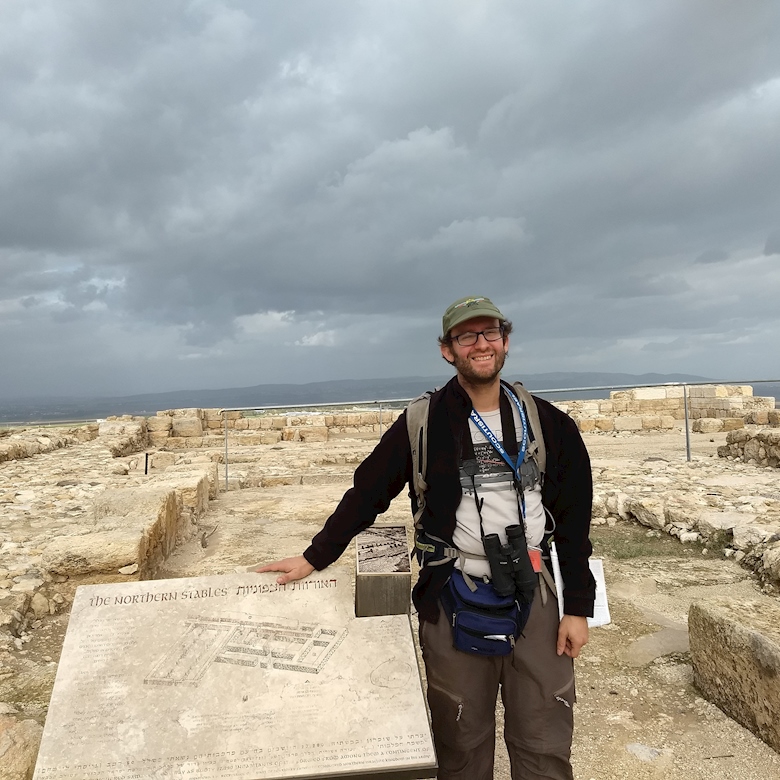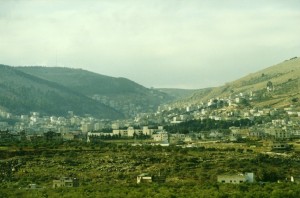
Continuing from my last Podcast I am now dealing with the historical issues surrounding Josiah. I tell the dramatic story of the battle of Armageddon and finally answer the question: who is the evil King?


Continuing from my last Podcast I am now dealing with the historical issues surrounding Josiah. I tell the dramatic story of the battle of Armageddon and finally answer the question: who is the evil King?
I started a new YouTube channel with a new project called Pop up Docu-tours.
Here’s the first video, it’s a general overview of the Old City from the Haas Promenade.
The “Shfeila” or Judean Foothills is the area between the Jerusalem Hills and the Coastal Plain. It has been the battlefield of Judea for more than 2000 years. The soft chalk hills crowned with grassy meadows are a perfect home for many plants and animals. Join me on a fun family adventure, exploring the Foothills of Judea.
Itinerary:
It is believed that the Herodion Temple Mount took much longer to build than Herod actually lived for. Consider how long it must have took to even build the machinery and work out the engineering to build the entire massive structure.
The Temple Mount had 140,000 square meters surface area. The Western Wall is 488 meters in length alone. The largest stone is well over 280 tonnes (some say 570 tonnes). According to the Christian Scripture it took more than 46 years to build (John 2:20).
It is highly likely that , not unlike this blog, there were many starts and stops!
Stay tuned for more interesting and entertaining blogs, podcasts and videos!
Bibliography
Hittite Treaties and Letters, D. Luckenbill
The American Journal of Semitic Languages and Literatures
Vol. 37, No. 3 (Apr., 1921), pp. 161-211
Reflections on The Mitanni Emergence, G. Schwartz
Berlin Studies of the Ancient World, Vol. 17
The Beginning of Desire: Reflections on Genesis, A Zornberg
Image Books 1996
Studies in Bereishit, Nechama Leibowitz
Jerusalem, WZO, 1976
Pseudo Translation of Yonatan ben Uzziel:
http://targum.info/targumic-texts/pentateuchal-targumim/
Please see the main Bibliography for more.
Welcome to my first podcast in the series: “The History of Judaism”. I shall be telling the History and story of the Jews from an educated Jewish Perspective. the first podcast focuses on Abraham and my decision to place this as the start of my narrative about Jewish History.
Here is a Map of Abraham’s Journeys:
Next time: A Journey to the Other Side: Abraham’s historical narrative
(The music in this podcast is “By Way of Haran” by Pharoah’s Daughter recreated under the following creative commons license “Live on WFMU’s Transpacific Sound Paradise 12/12/2009 byPharaoh’s Daughter is licensed under a Attribution-Noncommercial-No Derivative Works 3.0 United States License.” Check out the band at www.pharaohsdaughter.com/music.html )
This is just one picture of a recent addition to the Library of Congress. The collection was recently reported on by Lenny Ben David in a Jerusalem Post article. In the article Lenny Ben David recalls how a settlement of American missionaries came to Jerusalem and recorded the many astounding features of their new lives in Israel in photo form, this is known as the American Colony Collection. This collection in particular documents the discovery of a quarry from the time of King Herod. The mine has been thought to be from a number of different eras from the Solomonic era to the time of Zedekiah. It was the site of cultic activity, a rubbish heap and a curiosity at various different times of history.
One thing that should be noted is that since most of the building from ancient times to the present day are made out of Jerusalem limestone, known as ‘Jerusalem stone’ (that wonderful sandy / pinky / off whitey stone that shines gold in the Jerusalem sunset. The British even made an ordinance that all buildings, by law, had to be made out of this stone. It is sure that this quarry and many like it saw much use. This quarry is responsible for the way the Holy City looks today.
You too can request to see this on one of my Old City Tours !
(My first of many new blog posts since my vacation after my wedding, watch this space for more!)

Judah had been working with his brothers on the sheep before he ‘went down’ to become part of another story which eventually ends in him accusing his sister in law of being a prostitute after unknowingly sleeping with her himself. His ‘going down’ is both a spiritual descent and a literal one as the Mountains of Shechem where he was shepherding his sheep are in quite a high mountain range.
This descent is similar to Samson’s descent to Timna (Judges 14:1), both in terms that it was a spiritual descent to marry a philistine woman and an actual descent (Timna is a valley). Also both descents are a necessary descent for some gain. Samson was a ‘thorn in the side’ of the Phillistines, even though he seemed to be involved in their activities, he did this to help the Israelites by causing chaos in the Philistine ranks. Judah’s actions also bore good fruit as the descendent of his actions with his daughter in law was King David, who is seen as a symbol of the Messiah.
This teaches us the concept of: “ירידה לצורך עליה” (Yeridah letsorech aliyah) or a descent that creates an ascent. In Hassidic thought, in particular in the works of Rabbi Nachman of Breslov, eighteenth century Hassidic Master, this is when a person goes through a low spiritual time which ends in a rise and elevation in the person’s spiritual status. Sometimes a person feels far from their spiritual potential, but they must know that a change is coming soon.
(Genesis (Bereishit) 28:10 -11)
In this week’s Torah portion, when Jacob leaves his parents to escape from his brother’s wrath and find a wife there is a very bizarre episode. He arrived at some un-named place which the hebrew text says he ‘touched’, he then went to sleep and had a fantastical dream where God appears to him promising him saftey and he sees Angels ascending and descending on a ladder to heaven. If this was n’t bizarre enough Rashi the 10th century scholar’s explanation of the text is even more wondrous.
Rashi locates the place as Mount Moriah, the place where Abraham nearly sacrificed Isaac and where the Temple of Solomon was built. This fits in thematically as the Binding of Isaac concerned God’s protection of Abraham and his progeny and the Temple of Solomon was a conduit to heaven as symbolised by the dream.
When Jacob woke up from his dream he says:
‘this is the House of God (or Beit El) and this is the gate of heaven”
(Genesis 28 : 17)
He calls it Beit El, not Mount Moriah, and as we can see on this map, they are at two entirely different places.
There are many explanations, some say Beit El is just meant figuratively, the ‘House of God’ means the Temple, not a place called ‘Beit El’ (not likely as the scripture goes to some lengths to tell us its former name; Luz). Possibly it refers to the position of the temporary Temple that existed before the Temple of Solomon or the Tabernacle. This was placed for a long period in Shiloh, just North of Beit El. My favourite explanation is Rashi’s, that the land (and some Rashi scholars say the fabric of the Universe itself) folded or ‘warped’ so that Jerusalem was the same place as Beit El.
In any case in hebrew the word place; ‘HaMakom’ is one of the names of God and reminds us that in every place, no matter how far we may feel we are from God, God is there.